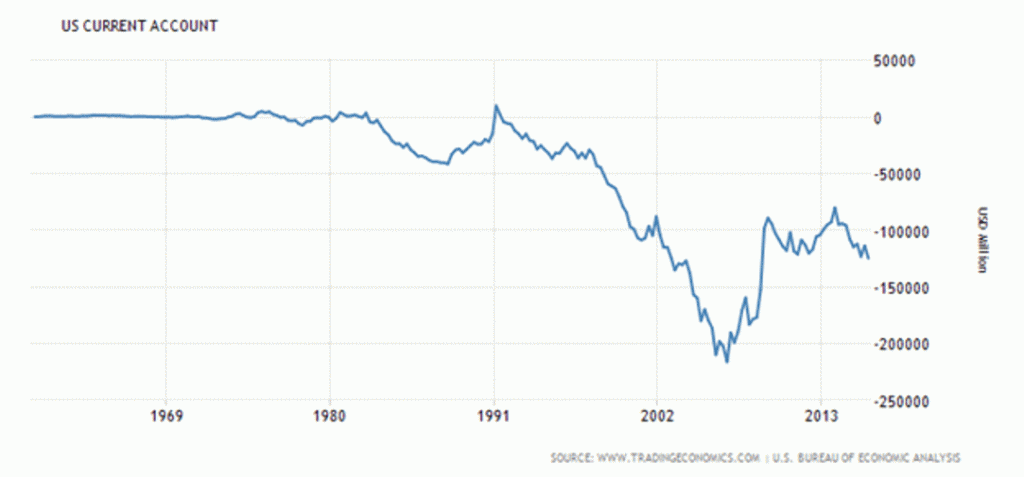Global Trade is Being Killed by Technology
Global trade has been a hot subject of discussion during the current US presidential election cycle. The basic downside argument is that Americans have lost jobs to foreigners, while the upside is greater efficiency and lower costs. This is an emotional subject and facts are subject to much distortion.
A quick background. The US went off the gold standard in 1971, but with an ingenious twist. The USD was to be the only currency that could be traded for oil. The “petrodollar” was now a true fiat currency. Then in 1979 the General Agreement on Tariffs and Trade -Tokyo was completed. Shortly thereafter the US started to develop a current account deficit, after decades of the economy being largely in balance. The North America Free Trade Agreement came into effect in 1994 and the current account deficit soared, as seen in the chart below.
These trade agreements moved US production to more wage competitive countries such as Mexico, China and Southeast Asia. American consumers (and many others) paid for purchases of offshored goods with debt. Thus the ballooning current account deficit.
Offshoring production has been very good for companies and their executives, but not for the bulk of society. Donald Trump wants to change this, using tariffs and the like to encourage reshoring of American production.
Well, technology is already coming to the rescue. Some of the technologies already used in manufacturing, or soon to be, include: 3D printing, robotics, nanotechnology, body scanning and wearable technology.
For example, the manufacture of textiles and clothing is a mainstay of Chinese and Southeast Asian manufacturing. It employs millions in what is still largely manual labour. But already textile manufacture can be automated, so can cutting, sewing and packaging. This technology can be used anywhere, but requires skilled people for repair and maintenance.
There is no reason why clothes purchased in the US are not made in the US, thus eliminating significant supply chain costs. This applies equally to many other manufactured products and other developed economies.
The next stage on the horizon could be completely personalised manufacturing. For example, your body is scanned and a perfectly fitting suit could be made locally and available for pick up in a day or two. Similarly, for shoes etc.
While reshored automated manufacturing won’t supply as much employment as previously, it is still superior to buying offshored goods with debt.
Most people are now well aware that offshoring production has been bad news for the average citizen. The Obama administration wants to go even further, with the proposed Transatlantic Trade and Investment Partnership and the Trans-Pacific Partnership. Without going into detail, these “partnerships” are proposing yet more control and profit to big business. They are resisted around the world, including by both US presidential candidates.
Let’s hope that technology can save the day from the globalists.

